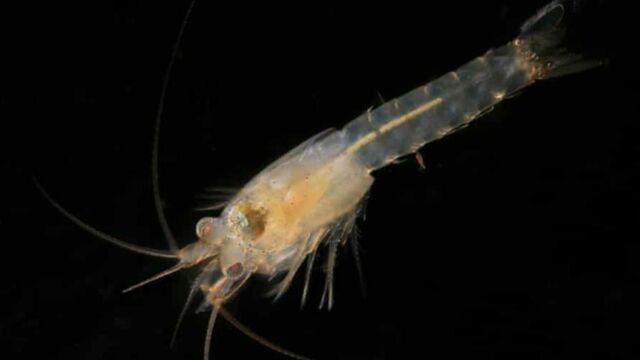In Forest Hill, South London, the Horniman museum has a large collection of over 350,000 artefacts of cultural, anthropological, and natural importance. One of it’s most popular attraction is the nature display, with many stuffed animals, and of course, fish tanks.
Discover our latest podcast
These have been around for many years now, and host a collection, of fish, molluscs, and shrimps. And it turns out some of those were surprise guests.
Hiding in plain sight
Heteromysis hornimani is the name given to a brand new species of shrimp discovered in the middle of London, where they had been ‘breeding like mad’ for many years. The tiny pale brown shrimp has never actually been found in nature, so it’s original habitat remains unknown.
Aquarium curator Dr Jamie Craggs believes that their tiny size (6 mm) may account to how they’ve escaped serious attention all this time. He testifies that these shrimps seem to have always been in the aquariums:
I’ve been here 12 years and they’ve been here all that time.[…] We’ve used them as a food source because they breed so prolifically.
A wealth of suprises
This shrimp is said to a zippy little thing. When most shrimps will tend to creep around on the ‘sea’ floor, eating or filtering water all the way, this energetic creature swims unusually fast, forming ‘figures of eight.’
Furthermore, the fact that this species has managed not only to survive, but to thrive in an environment which hasn’t specifically been tuned to it is a testament to advancement in animal/human welfare:
Advancements in filtration technology mean aquariums are running as close to true ecosystems as we can get, creating a wealth of knowledge and ability to do research. Discovering this shrimp is testimony to that. There’s still so much that is uncharted in our oceans















